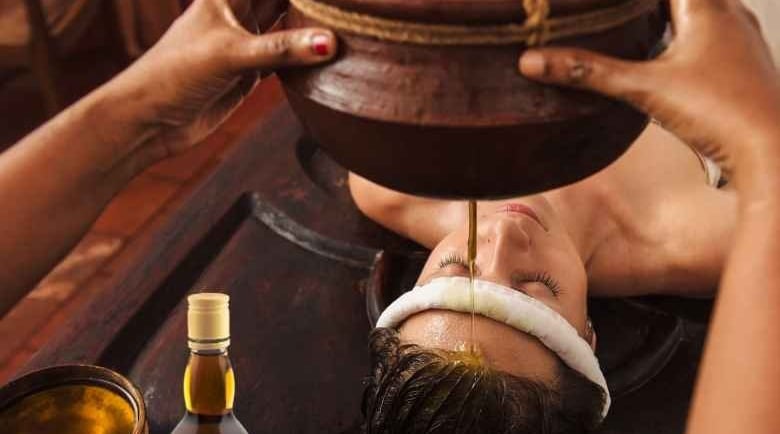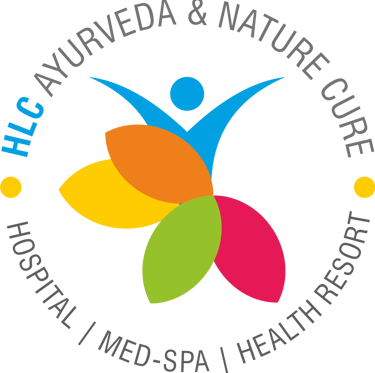Stroke Recovery with Ayurveda and Nature Cure
At HLC Ayurveda and Nature Cure Hospital, we combine time-tested Ayurvedic therapies and Nature Cure principles to support stroke recovery. Our holistic approach promotes healing by addressing the root causes, restoring balance to the body and mind, and enhancing overall well-being. With personalized treatments, herbal remedies, therapeutic massages, yoga, and meditation, we aim to help you regain mobility, improve cognitive function, and rejuvenate your health—naturally and sustainably.


A stroke is a medical emergency that occurs when there is an interruption in the blood supply to the brain. This disruption deprives brain cells of oxygen, leading to their damage or death. Strokes can have a profound impact on a person's health, potentially causing long-term disability or even death. Understanding the causes, symptoms, types, and treatment options for stroke is essential for early intervention and prevention.
Types of Stroke
There are three main types of strokes, each caused by different factors:
Ischemic Stroke: The most common type, accounting for around 87% of all strokes. It occurs when a blood clot blocks or narrows an artery leading to the brain, preventing blood flow. These clots can form either in the brain (thrombotic stroke) or travel from another part of the body (embolic stroke).
Hemorrhagic Stroke: This occurs when a blood vessel in the brain ruptures, causing bleeding (hemorrhaging). The leaked blood puts pressure on surrounding brain tissue, damaging it. Hemorrhagic strokes are often caused by high blood pressure, aneurysms, or head trauma.
Transient Ischemic Attack (TIA): Often referred to as a "mini-stroke," a TIA occurs when there is a temporary blockage of blood flow to the brain. Although symptoms are short-lived (usually lasting less than 24 hours), a TIA is a warning sign that a person is at risk for a full stroke in the future.
Causes
Several factors can contribute to the development of a stroke. While some risk factors are beyond our control (such as age, gender, and genetics), many can be managed through lifestyle choices and medical interventions:
High Blood Pressure (Hypertension): This is the leading cause of both ischemic and hemorrhagic strokes. It weakens blood vessels, making them more likely to burst or become blocked.
Heart Disease: Conditions like atrial fibrillation (an irregular heartbeat) can increase the risk of clots forming in the heart and traveling to the brain.
Diabetes: High blood sugar levels can damage blood vessels, increasing stroke risk.
Smoking and Alcohol: Smoking causes narrowing of blood vessels, while excessive alcohol intake can lead to high blood pressure and arrhythmias.
Obesity and Physical Inactivity: These factors can contribute to high cholesterol, hypertension, and diabetes, all of which increase stroke risk.
Symptoms
Recognizing stroke symptoms early is crucial for receiving timely medical attention. The most common signs include:
Sudden numbness or weakness in the face, arm, or leg, especially on one side of the body.
Confusion or difficulty speaking or understanding speech.
Trouble seeing in one or both eyes.
Difficulty walking, dizziness, loss of balance, or coordination.
Severe headache with no known cause, which is more common in hemorrhagic strokes.
A simple acronym to help remember the signs of a stroke is FAST:
Face drooping: Ask the person to smile. Does one side of the face droop?
Arm weakness: Ask the person to raise both arms. Does one arm drift downward?
Speech difficulty: Ask the person to repeat a simple sentence. Is their speech slurred or strange?
Time to call emergency services: If any of these signs are present, call emergency services immediately.
Diagnosis
When someone is suspected of having a stroke, prompt diagnosis and treatment are essential to minimize brain damage. Medical professionals will often perform the following tests:
CT or MRI scans: These imaging tests help doctors determine whether the stroke is ischemic or hemorrhagic.
Blood tests: To check for underlying conditions like clotting disorders.
Angiography: A procedure that uses a dye to visualize blood flow in the brain, helping detect blockages or abnormalities in blood vessels.
Prevention
Preventing a stroke involves addressing risk factors and adopting a healthier lifestyle:
Control high blood pressure: Regular check-ups, medication, and lifestyle changes like reducing salt intake can help manage hypertension.
Adopt a healthy diet: Eating a balanced diet rich in fruits, vegetables, whole grains, and lean proteins can reduce the risk of stroke.
Exercise regularly: Physical activity helps control weight, improve circulation, and manage blood pressure.
Quit smoking: Smoking is a major contributor to the development of stroke.
Limit alcohol intake: Drinking in moderation or abstaining altogether can reduce stroke risk.
A stroke is a serious medical condition that requires immediate attention. Knowing the warning signs, understanding the causes and risk factors, and seeking timely treatment can make all the difference in recovery outcomes. By focusing on prevention through healthy lifestyle choices, it is possible to reduce the risk and lead a healthier life.
If you or someone you know is at risk of stroke, it's crucial to take proactive steps to manage the risk factors. Early detection and intervention can save lives and reduce the long-term effects of stroke.
Why Choose Ayurveda and Nature Cure for Stroke Recovery?
Holistic Approach: Both Ayurveda and Nature Cure treat the individual as a whole, focusing not just on physical symptoms, but also on emotional and mental well-being.
Personalized Treatment: Treatments are customized to each patient’s unique constitution, helping to target the root causes of stroke rather than just managing symptoms.
Fewer Side Effects: Unlike conventional medicines, which may have side effects, Ayurvedic and natural treatments are typically gentle and more sustainable in the long term.




